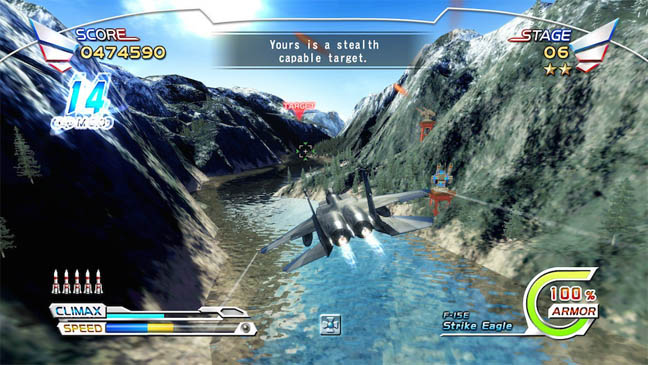This article is more than 1 year old
After Burner: Sega’s jet-fighting, puke-inducing arcade marvel
Top Gun-inspired 1980s crowd pleaser
Shadow cabinet
Most other home versions – Amiga, Atari ST, Commodore 64 – didn’t fare too well, with sloppy game mechanics and slow frame rates scuppering the joy. An unofficial NES port by unruly publisher Tengen turned out to be not too bad. Incredible that such wares were being sold so blatantly back then.
Back in the arcades, 1990’s G-LOC: Air Battle came along to take the mantle as an unofficial sequel. Featuring further enhanced super-scaling hardware in the shape of Sega’s Y-board, the game took cabinet design to the next logical point when the G-LOC R-360 housing was released.
This beastly contraption looked more like a gyroscopic flight-training device than an arcade machine, and was supposed to have an attendant to supervise its use, along with the all-important “panic button” to your right. As the name suggests, the cockpit could (and frequently did) rotate through 360 degrees, and would go into a spin should an enemy blaster catch you offguard. Still, this chap doesn’t seem to be a huge fan despite his mum’s kind "encouragement".
Burning back
While G-LOC’s sequel Strike Fighter (1991) was re-named as After Burner 3 for the home market, its impact was fairly insubstantial, appearing on just the Japan-only FM Towns and Sega’s Mega CD. It featured differing camera viewpoints, giving a slightly more flight-simulator style to proceedings.
It took until 2006 for a new arcade release – After Burner Climax – to appear bearing the original’s fabled moniker, this time featuring polygon-rendered visuals typical of the time. The title was moderately well-received, converted to Xbox 360, Playstation 3 (plus iOS / Android in 2013) but really its success was built on moist-eyed gamers reminiscing over their youth.

After Burner Climax – a new favourite from 2006
The myriad extra bits and pieces that have popped up over the years speak volumes for the commitment of After Burner fans. The Tiger-produced handheld and tabletop digital toys; Planet Moon Studio’s 2007 PSP title, After Burner: Black Falcon; the six CD compilation of in-game tracks released that same year. Not to mention the home-grown tweaked clones of the game produced by fans.
After Burner remains one of the most cherished examples of 1980s arcade gaming. Despite fairly repetitive gameplay that wasn’t ever the most cutting-edge or interesting, the awesomely powerful sprite shunting had a transfixed audience hooked – and amazingly, it took almost 10 years for home machines to present anything on a par. As Sega did indeed say in their marketing spiel: To be this good takes Ages. ®
Released 1987
Developer Sega AM2, Activision, Sunsoft, Tengen, WeeBee Games, NEC Avenue, CRI, Dempa
Publisher Sega
Platforms Arcade, Amiga, Atari ST, Commodore 64, MS-DOS, MSX, NES, PC Engine, Sega 32X, Sega Master System, ZX Spectrum
